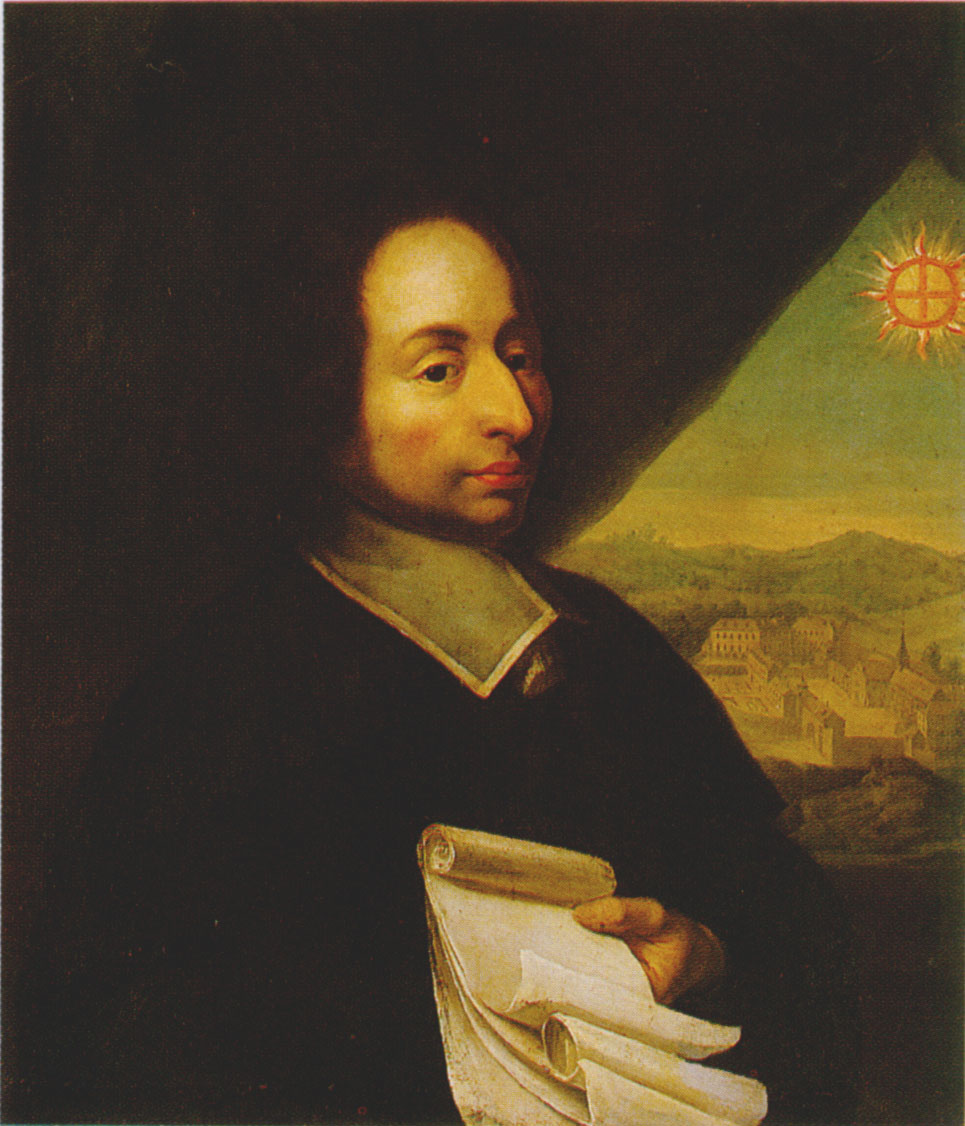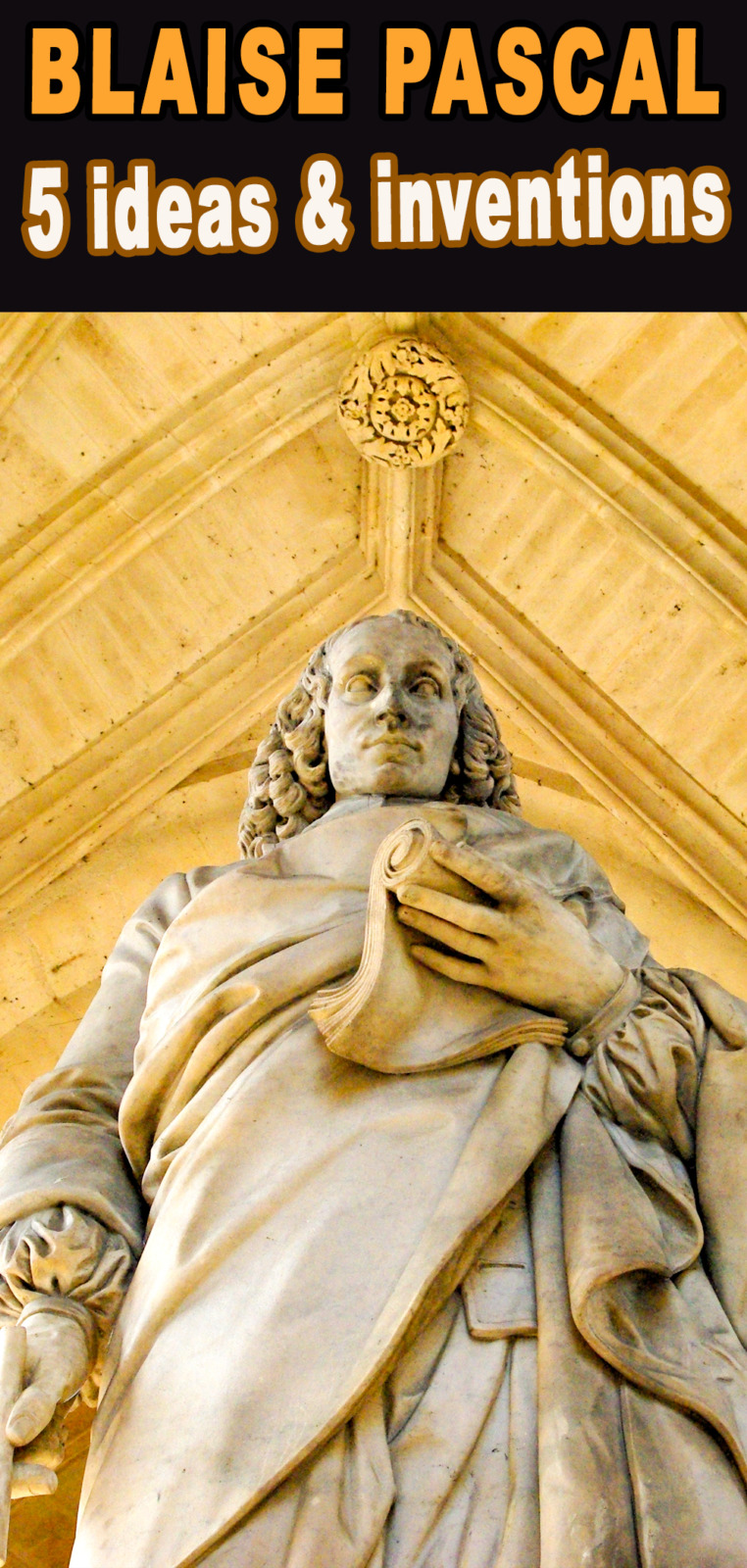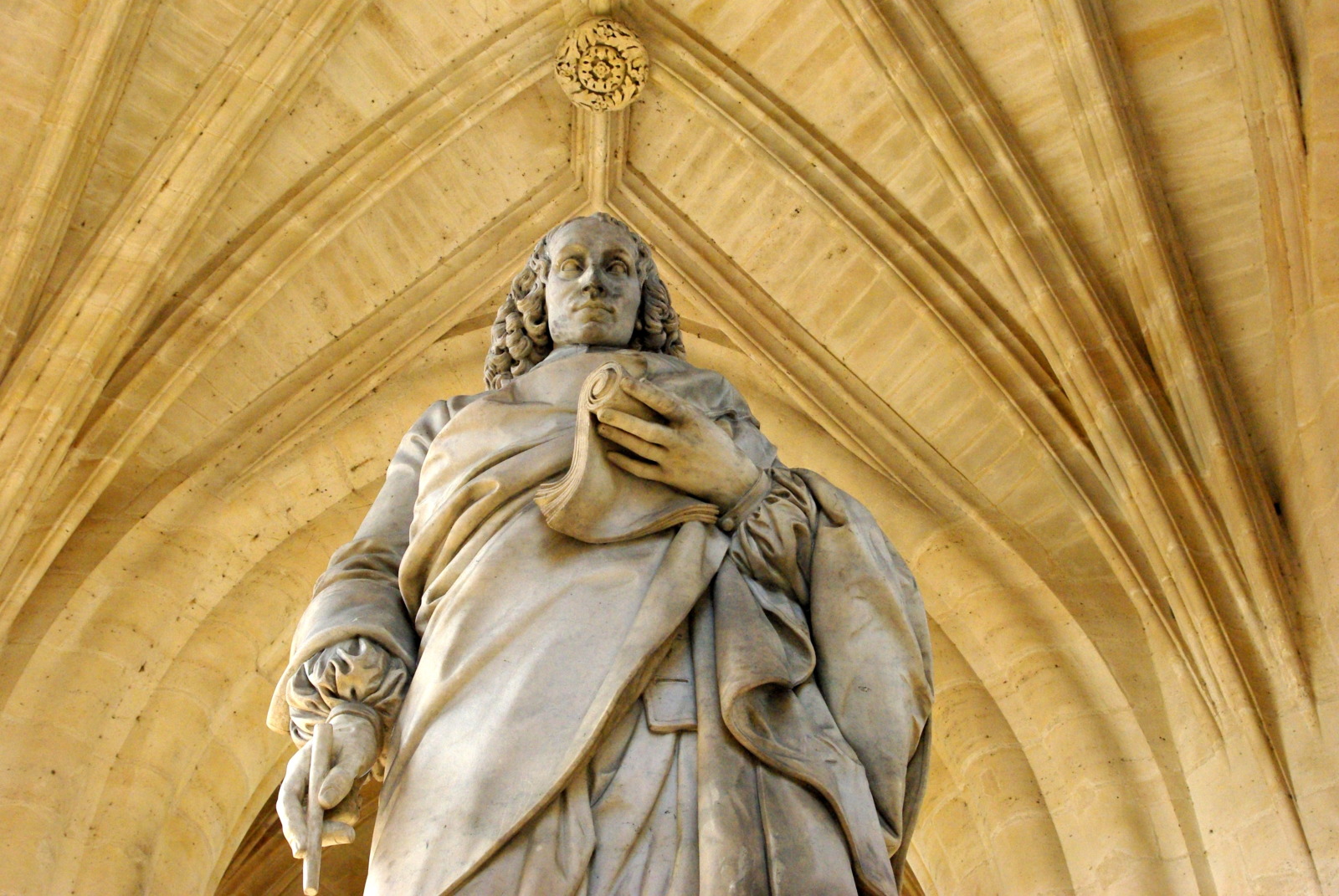In this guest article, find out more about five of the most important ideas and inventions that the world wouldn’t have had without Blaise Pascal (Clermont-Ferrand, June 19, 1623 – Paris, August 19, 1662). You will discover how the French philosopher, mathematician, and scientist advanced the science of his time. And how this great man became a pioneer in the natural and applied sciences.
[lwptoc]
Blaise Pascal, one of France’s radical thinkers
France has fostered some of the most revolutionary minds in Europe. This is particularly relevant to the fields of science and philosophy. Émile Reynaud helped invent the first projected image, while Jacques Cousteau explored the deep seas to expand marine knowledge. Others, like Michel Foucault and Simone de Beauvoir, need little explanation.
Travellers in France can find tours and museums that chronicle the lives and achievements of these radical thinkers. With the country’s long list of memorable historical figures, it’s easy to forget older, foundational inventors — no matter how influential their ideas have proven.
Take philosopher, mathematician, and scientist Blaise Pascal whose family originated from the city of Rouen (1623-1662).

Despite his fame, it’s easy to overlook Pascal’s accomplishments in the fields of math and science. However, most people today interact with his theories and inventions. Here are five of the most important ideas and inventions that the world wouldn’t have had without Pascal.
Perpetual Motion Machine
Many of Pascal’s most influential works relate to scientific and mathematic theories. However, Pascal also relied on machines to realise his ideas. In 1655, he set out to create a perpetual motion machine to challenge modern ideas of physics. Though he failed to create the machine, Pascal’s spinning wheel found purpose among the gaming elite in Paris, helping create the game of roulette.
![Perpetual Motion by Norman Rockwell [Public Domain]](https://frenchmoments.eu/wp-content/uploads/2021/08/Perpetual-Motion-by-Norman-Rockwell-Public-Domain.jpg)
Though the game evolved differently between its French, American, and European variations, the name ‘roulette’ preserves its origin. In French, the word ‘roulette’ means ‘little wheel’. It was this little wheel that Pascal helped pioneer in the mid-17th-century, leading to a heyday of roulette by the late 1700s.
Mechanised Calculator (the Pascaline)
Pascal helped invent one of the first mechanical calculators, known as the Pascaline. This basic invention allowed a person to add and subtract two numbers, as well as multiply and divide through repeated adding and subtracting. To do this, the machine had a series of basic dials that allowed a user to carry digits independently.
![The Pascaline in the Arts et Métiers museum © Unknow Author - licence [CC BY-SA 3.0] from Wikimedia Commons](https://frenchmoments.eu/wp-content/uploads/2021/08/The-Pascaline-in-the-Arts-et-Métiers-museum-©-Unknow-Author-licence-CC-BY-SA-3.0-from-Wikimedia-Commons.jpg)
Pascal released his first prototype in 1642 before finalising the Pascaline in 1645. It would go on to be one of his biggest inventions during his lifetime, earning him a royal privilege (basically a patent) from King Louis XIV to sell and profit from them. Nine of these devices can be found in museums today, from the MET to London’s Science Museum.
Pascal’s Triangle
Not to be confused with Pascal’s theorem (which relates to hexagons), Pascal’s Triangle is a way to calculate coefficients in an arrangement of numbers shaped in a triangle. This basic formula is still taught in most schools today — however, Pascal isn’t credited with the invention of this formula, only its popularisation in modern math.

This formula is particularly relevant to understanding probabilities and finding combinations. Similar to the perpetual motion machine, this aspect of Pascal’s career would find particular relevance for the elite gambling crowds of Paris in the late 1600s and 1700s.
Atmospheric Pressure (the ‘Pascal’)
One of Pascal’s biggest contributions to the modern world was his efforts in fluid and atmospheric pressure. He began creating his own barometers using mercury and formulas from Galileo Galilei and Evangelista Torricelli, then focused once again on fluid pressure.
His early studies with rudimentary barometers led to foundational theories related to hydrodynamics and hydrostatics, which are branches of physics that focus on resting and in-motion fluids. His work in this field led to later scientists dubbing a unit of pressure ‘the Pascal’.
![A pressure gauge reading in psi (red scale) and kPa (black scale) © leapingllamas - licence [CC BY-SA 3.0] from Wikimedia Commons](https://frenchmoments.eu/wp-content/uploads/2021/08/A-pressure-gauge-reading-in-psi-red-scale-and-kPa-black-scale-©-leapingllamas-licence-CC-BY-SA-3.0-from-Wikimedia-Commons.jpg)
Pascal’s Principle
As mentioned above, Pascal worked extensively in the field of physics that relates to fluid mechanics and pressure. As mentioned above, this helped lay the foundation for further studies in fluid mechanics. Along the way, Pascal invented a few other useful tools, including the syringe and the hydraulic press.
However, one of his biggest contributions related to Pascal’s principle (sometimes written as law) specifically states that the pressure in resting fluid is consistent throughout the fluid. Though this may seem intangible, Pascal’s Principle has had concrete effects on modern life; one of the most important was the invention of hydraulic presses, which have since been adapted in vehicles for braking (hydraulic brakes that use liquid).
![Knox Motors Co. used hydraulic brakes in 1915, in a Tractor unit [Public Domian]](https://frenchmoments.eu/wp-content/uploads/2021/08/Knox-Motors-Co.-used-hydraulic-brakes-in-1915-in-a-Tractor-unit-Public-Domian.jpg)
Pin it for later
Did you like what you’ve read? Then pin it on Pinterest:

Paris Trivia
You will find a statue of Pascal under the Tour Saint-Jacques in Paris. This is where the scientist repeated his experiments on the Puy de Dôme about atmospheric pressure and air gravity.





